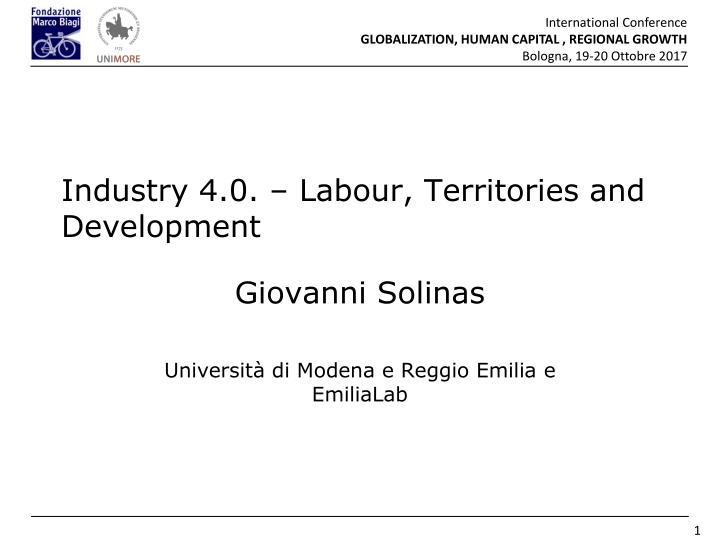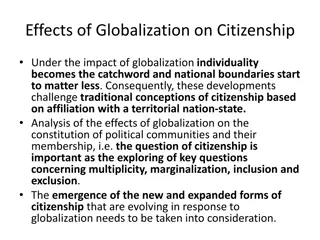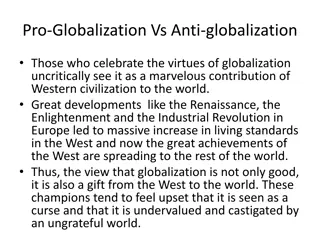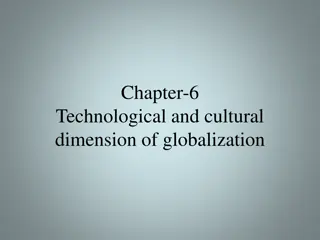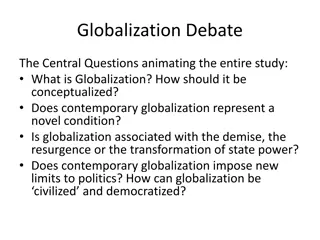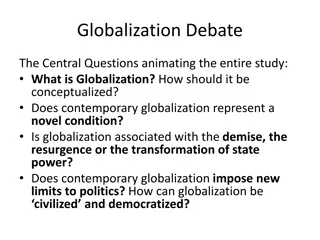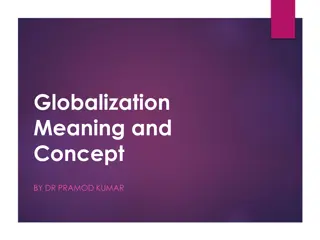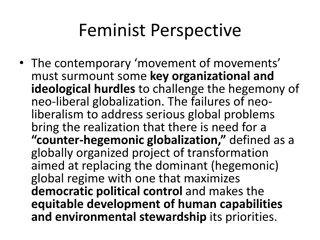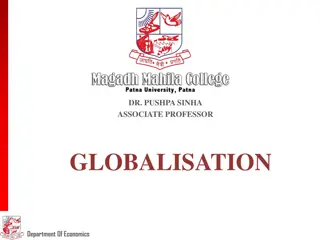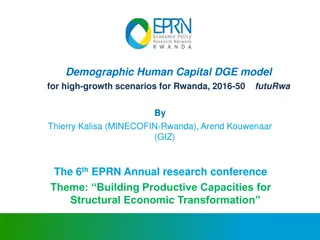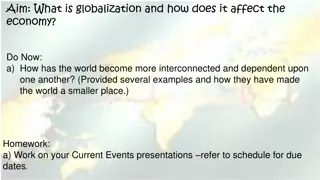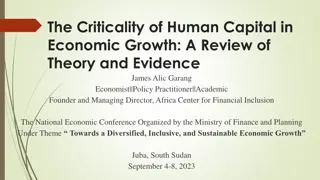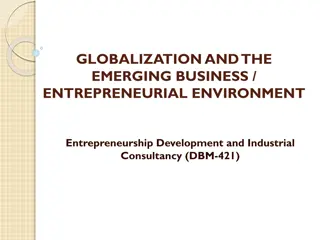Industry 4.0 and Human Capital in Globalization Conference
This content revolves around the International Conference on Globalization, Human Capital, and Regional Growth held in Bologna, focusing on Industry 4.0, labor, territories, and development. Giovanni Solinas from the University of Modena and EmiliaLab discusses the impact of automation, digital revolution, job polarization, and the definition of Industry 4.0 as a comprehensive transformation in industrial production merging digital technology and the internet with conventional industry. The images depict various aspects of the conference, including the Fourth Industrial Revolution, enabling technologies of Industry 4.0, and related terms like smart factory, cyber-physical systems, and artificial intelligence-driven automation.
Download Presentation

Please find below an Image/Link to download the presentation.
The content on the website is provided AS IS for your information and personal use only. It may not be sold, licensed, or shared on other websites without obtaining consent from the author.If you encounter any issues during the download, it is possible that the publisher has removed the file from their server.
You are allowed to download the files provided on this website for personal or commercial use, subject to the condition that they are used lawfully. All files are the property of their respective owners.
The content on the website is provided AS IS for your information and personal use only. It may not be sold, licensed, or shared on other websites without obtaining consent from the author.
E N D
Presentation Transcript
International Conference GLOBALIZATION, HUMAN CAPITAL , REGIONAL GROWTH Bologna, 19-20 Ottobre 2017 Industry 4.0. Labour, Territories and Development Giovanni Solinas Universit di Modena e Reggio Emilia e EmiliaLab 1
International Conference GLOBALIZATION, HUMAN CAPITAL , REGIONAL GROWTH Bologna, 19-20 Ottobre 2017 Contents: Were they definitely wrong? They said Ned Ludd was an idiot boy/ That all he could do was wreck and destroy, . He turned to his workmates and said: Death to Machines /They tread on our future and stamp on our dreams. (Song by Robert Calvert, 1985). 1. What are we talking about? 2. An inconclusive (and old) debate 3. A new view: automation anxiety 4. The state of the art: manufacturing in Europe and other developed countries 5. (Re)connecting workers 6. Digital revolution and job polarization in US and EU 7. (Re)connecting worker to work policy issues "What I object to, is the craze for machinery, not machinery as such. The craze is for what they call labour-saving machinery. Men go on 'saving labour', till thousands are without work and thrown on the open streets to die of starvation." (Gandhi, 1924). Warning!!! Making previsions is not and should not be among the economist s tasks (Dani Rodrik, 2015). 2
International Conference GLOBALIZATION, HUMAN CAPITAL , REGIONAL GROWTH Bologna, 19-20 Ottobre 2017 1. What are we talking about? The Fourth Industrial Revolution and its effects on work and employment Giovanni Solinas UniMORE 3
International Conference GLOBALIZATION, HUMAN CAPITAL , REGIONAL GROWTH Bologna, 19-20 Ottobre 2017 Definition of Industry 4.0 Angela Merkel: The comprehensive transformation of the whole sphere of industrial production through the merging of digital technology and the internet with conventional industry . Coined by the German government (High Tech Strategy) Connecting machines Basic ideas in several documents (2006, 2010, 2012, 2013) Related terms: Fourth Industrial Revolution Smart factory or advanced manufacturing Industrial Internet Cyber-physical systems Makers AI (Artificial Intelligence)-driven automation Giovanni Solinas UniMORE 4
International Conference GLOBALIZATION, HUMAN CAPITAL , REGIONAL GROWTH Bologna, 19-20 Ottobre 2017 Definition of Industry 4.0 Not a single technology, but a bundle of enabling (and potentially disruptive) technologies Internet of Things / M2M Big Data and advanced analytics Cloud technology Additive manufacturing (3D printing) Advanced robotics Virtual and augmented reality Cyber security Giovanni Solinas UniMORE 5
International Conference GLOBALIZATION, HUMAN CAPITAL , REGIONAL GROWTH Bologna, 19-20 Ottobre 2017 2. An inconclusive (and old) debate Structural and technological unemployment Giovanni Solinas UniMORE 6
International Conference GLOBALIZATION, HUMAN CAPITAL , REGIONAL GROWTH Bologna, 19-20 Ottobre 2017 2. An inconclusive (and old) debate As it is well known, economists are extremely able to produce opposite views. Pessimistic views Ricardo stated that long term technological unemployment could occur. On this line Marx went much further. Optimistic views Machines cannot be constructed without considerable labor, which gives occupation to the hands they throw out of employ ( J.B. Say, 1964). Giovanni Solinas UniMORE 7
International Conference GLOBALIZATION, HUMAN CAPITAL , REGIONAL GROWTH Bologna, 19-20 Ottobre 2017 2. An inconclusive (and old) debate Mainstream theory Innovation has the same effect as an increase in the quantity of production factors, say labour and capital: as these tend to be always fully employed, such an increase will necessarily result in an increase in the level of production and income 'as soon as the liberated resources can be effectively transferred to new uses' (Hicks, 1932, p.121). If prices are flexible and there are no obstacles to competition, market economies always tend to full employment, and this also when technical change reduces the labour inputs required to produce a given output. Giovanni Solinas UniMORE 8
International Conference GLOBALIZATION, HUMAN CAPITAL , REGIONAL GROWTH Bologna, 19-20 Ottobre 2017 2. An inconclusive (and old) debate General consesus: In the short-run innovation may displace jobs. In the long-run: The long-term equilibrium (if any) depends on the strenght of other compensating forces . Compensation effects are labour-friendly consequences of innovation which "compensate" workers for job losses initially caused by new technology. Giovanni Solinas UniMORE 9
International Conference GLOBALIZATION, HUMAN CAPITAL , REGIONAL GROWTH Bologna, 19-20 Ottobre 2017 2. An inconclusive (and old) debate Compensation effects operate (Say, Ricardo, Mc Culloch) Via new machines. (The labour needed to build the new equipment that applied innovation requires). Via new investments. (Enabled by the cost savings and therefore increased profits from the new technology). Via changes in wages. (In cases where unemployment does occur, this can cause a lowering of wages, thus allowing more workers to be re-employed at the now lower cost. On the other hand, sometimes workers will enjoy wage increases as their profitability rises. This leads to increased income and therefore increased spending, which in turn encourages job creation). Via lower prices. (Which then lead to more demand, and therefore more employment. Lower prices can also help offset wage cuts, as cheaper goods will increase workers' purchasing power). Via new products. (Where innovation directly creates new jobs). Giovanni Solinas UniMORE 10
International Conference GLOBALIZATION, HUMAN CAPITAL , REGIONAL GROWTH Bologna, 19-20 Ottobre 2017 2. An inconclusive (and old) debate Are we still there? Many scholars say that now things are different (Brynjolfsson and McAfee, 2011; Pilati, 2016;Schwab, 2016; Spence, 2015) Why? Giovanni Solinas UniMORE 11
International Conference GLOBALIZATION, HUMAN CAPITAL , REGIONAL GROWTH Bologna, 19-20 Ottobre 2017 3. A new view: implications of Industry 4.0 The digital revolution (and Industry 4.0) is changing scales in three dimensions: Time Space Diffusion, and network effects Giovanni Solinas UniMORE 12
International Conference GLOBALIZATION, HUMAN CAPITAL , REGIONAL GROWTH Bologna, 19-20 Ottobre 2017 3. A new view: implications of Industry 4.0 Nobel laureate Michael Spence (2015) In his view, the vast majority of the cost of digital technologies comes at the start, in the design of hardware and, more important, in creating the software that enables machines to carry out various tasks. "Once this is achieved, the marginal cost of the hardware is relatively low (and declines as scale rises), and the marginal cost of replicating the software is essentially zero . "With a huge potential global market to amortize the upfront fixed costs of design and testing, the incentives to invest [in digital technologies] are compelling . Spence believes that, unlike prior digital technologies, the motivating force in the current wave of digital technologies "is cost reduction via the replacement of labor". Giovanni Solinas UniMORE 13
International Conference GLOBALIZATION, HUMAN CAPITAL , REGIONAL GROWTH Bologna, 19-20 Ottobre 2017 4. The state of the art Manufacturing in Europe and other developed countries Giovanni Solinas UniMORE 14
International Conference GLOBALIZATION, HUMAN CAPITAL , REGIONAL GROWTH Bologna, 19-20 Ottobre 2017 Manufacturing in EU: 2 million companies 33 million jobs 80% exports 80% private R&D Relative decline: 15.7% of value added (2015), 19.5% in 1995 24.3% of total employment (2014), 31.1% in 1995 Rise of China, relocation of labour-intensive work and global supply chains outside EU financial and economic crisis, and technology. Giovanni Solinas UniMORE 15
International Conference GLOBALIZATION, HUMAN CAPITAL , REGIONAL GROWTH Bologna, 19-20 Ottobre 2017 Figure 2 - Employment in industry (% of total employment) 38.0 36.0 34.0 32.0 30.0 28.0 26.0 24.0 22.0 20.0 1995 1996 1997 1998 1999 2000 2001 2002 2003 2004 2005 2006 2007 2008 2009 2010 2011 2012 2013 2014 Source: World Bank Germany European Union Italy Giovanni Solinas UniMORE 16
International Conference GLOBALIZATION, HUMAN CAPITAL , REGIONAL GROWTH Bologna, 19-20 Ottobre 2017 Automation anxiety: greatly improved computing power, artificial intelligence and robotics raise the possibility of replacing previously observed. labour on a scale not Note: The opposite view of makers: people who want to do something and has the tool (technology) to do that (Wired editor-in-chief Chris Anderson). Seminal paper Frey & Osborne (Oxford, 2013) estimate the probability of computerisation for 702 detailed occupations in USA. Find that 47% of US employment is at risk. Occupation-based approach. Giovanni Solinas UniMORE 17
International Conference GLOBALIZATION, HUMAN CAPITAL , REGIONAL GROWTH Bologna, 19-20 Ottobre 2017 Frey & Osborne (2013) Giovanni Solinas UniMORE 18
International Conference GLOBALIZATION, HUMAN CAPITAL , REGIONAL GROWTH Bologna, 19-20 Ottobre 2017 Less extreme views (and estimates) Arntz-Gregory-Zierahn (2016) estimate job automatibility for 21 OECD countries. They find that, on average, 9% of jobs are automatable. Task-based approach Giovanni Solinas UniMORE 19
International Conference GLOBALIZATION, HUMAN CAPITAL , REGIONAL GROWTH Bologna, 19-20 Ottobre 2017 Arntz-Gregory-Zierahn (2016) Giovanni Solinas UniMORE 20
International Conference GLOBALIZATION, HUMAN CAPITAL , REGIONAL GROWTH Bologna, 19-20 Ottobre 2017 5. (Re)connecting workers Giovanni Solinas UniMORE 21
International Conference GLOBALIZATION, HUMAN CAPITAL , REGIONAL GROWTH Bologna, 19-20 Ottobre 2017 5. (Re)connecting workers Autor (2015): Automation substitutes labour, but strong complementarities between automation and labour occur that increase productivity, raise earnings, and augment demand for labour. Technology eliminates jobs, not work. Job polarisation in recent years is lower than expected (see also Moretti, 2013) Giovanni Solinas UniMORE 22
International Conference GLOBALIZATION, HUMAN CAPITAL , REGIONAL GROWTH Bologna, 19-20 Ottobre 2017 Autor (2015): Routine tasks, explicit and codifiable tasks, characteristic of many middle-skilled cognitive and manual activities. Increasingly displaced by computers and robots. Substantial decline in employment Abstract tasks, tasks that require problem-solving capabilities, intuition, creativity, and persuasion. Characteristic of professional, technical, and managerial occupations. High level of education and analytical capability. Benefit from IT via strong complementarities between routine and abstract tasks Manual tasks requiring situational adaptability, visual and language recognition, and in-person interactions. Ex. Janitors and cleaners, vehicle drivers, security guards, flight attendants, food service workers, home health aides. No complementarities with IT, but benefit from increased demand for these activities. Job polarization: tends to reduce in the future Emergence of new artisans (Katz, Micelli), middle-skill workers who combine routine technical tasks with nonroutine tasks (interpersonal interaction, flexibility, adaptability, problem solving). Giovanni Solinas UniMORE 23
International Conference GLOBALIZATION, HUMAN CAPITAL , REGIONAL GROWTH Bologna, 19-20 Ottobre 2017 6. Digital revolution, Work-force composition, and Job polarisation i Giovanni Solinas UniMORE 24
International Conference GLOBALIZATION, HUMAN CAPITAL , REGIONAL GROWTH Bologna, 19-20 Ottobre 2017 First tentative conclusion Job polarisation, yes but employment (and wage) dynamics are beginning to tell a somewhat different story employment indefinitely. While some of the tasks in many current middle-skill jobs automation, many middle-skill jobs will continue to demand a mixture of tasks from across the skill spectrum (Autor, 2015). polarization will not continue are susceptible to Giovanni Solinas UniMORE 25
International Conference GLOBALIZATION, HUMAN CAPITAL , REGIONAL GROWTH Bologna, 19-20 Ottobre 2017 First tentative conclusion (Autor, 2015) Job polarisation, yes but Polanyi s paradox we know more than we can tell presents a challenge for computerization because, if people understand how to perform a task only tacitly and cannot tell a computer how to perform the task. (Author, p.24) This is the key to understand why so many jobs survive . Holzer (2015) documents that new middle skill jobs in most economies are growing rapidly. Giovanni Solinas UniMORE 26
International Conference GLOBALIZATION, HUMAN CAPITAL , REGIONAL GROWTH Bologna, 19-20 Ottobre 2017 Entrepreneurs, new firms and Industry 4.0 in Emilia In this theoretical framework new entrepreneurs in in Emilia (and other regions) are: Either a product of very high level of educational training (Es. top universities). They have high level of scientific and technical education, full control and understanding of (some) new technogies, but also vision, leadership, . Or they are new artisans, sons of the italian tradition in manufacturing, and at the same time, very similar to those depicted by Katz and by Autor. Giovanni Solinas UniMORE 27
International Conference GLOBALIZATION, HUMAN CAPITAL , REGIONAL GROWTH Bologna, 19-20 Ottobre 2017 7. Reconnecting workers (to work) Policy issues Giovanni Solinas UniMORE 28
International Conference GLOBALIZATION, HUMAN CAPITAL , REGIONAL GROWTH Bologna, 19-20 Ottobre 2017 Reconnecting workers to work cannot be left to market forces: Some proposals deserve attention Basic income (Martin Ford, Erik Brynjolfsson, Robert Reich and Guy Standing) Education (Erik Brynjolfsson and Andrew McAfee, Ignazio Visco and many others) Shorter working hours (Wassily Leontief, John R. Commons, John Maynard Keynes) Broadening the ownership of technological assets (James S. Albus, John Lanchester, Richard B. Freeman, Noah Smith) But also industrial policies how they have been depicted in this conference Giovanni Solinas UniMORE 29
International Conference GLOBALIZATION, HUMAN CAPITAL , REGIONAL GROWTH Bologna, 19-20 Ottobre 2017 Reconnecting worker to work: income distribution John Maynard Keynes predicted widespread technological unemployment due to our discovery of means of economising the use of labour outrunning the pace at which we can find new uses for labour (Keynes, 1933, p. 3). In Economic possibilities for our grandchildren (1931), he envisaged a world with no scarcity, short working hours and plenty of leisure. One of the necessary condition of this construction was a fair distribution of income and low returns to private investment. We do know that something went wrong (Piketty and many others) Giovanni Solinas UniMORE 30
International Conference GLOBALIZATION, HUMAN CAPITAL , REGIONAL GROWTH Bologna, 19-20 Ottobre 2017 An even more tentative conclusion Our world will not be made up only of Google-cars, drones, di Amazon, www, and so on. There are opportunities for using abilities and competence not subject but complementary to digitalization and automation (up to now ). I believe that in the Third Italy, in the regions where Industrial Districts important role, there is plenty of space for the human use of human being (quoting Norbert Wiener). Thanks for your attention !!! had and have an Giovanni Solinas UniMORE 31
